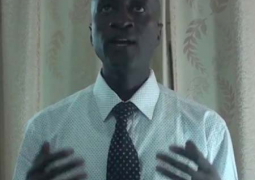(1.International College of Shenyang Jianzhu University, Shenyang,110168;2. School of Management, Shenyang Jianzhu University, Shenyang,110168)
Abstract: The proposal of the “Belt and Road” development initiative has brought great development opportunities to the countries along the Belt and Road, and also brought many challenges. Analyzing several opportunities and challenges with a greater impact on various countries, and summarizing them, we hope to promote the better development of various countries.
Key words: the Belt and Road; Countries along the line; opportunity; challenge
- Introduction
“Belt and Road”, short for the “Silk Road Economic Belt” and the “21st Century Maritime Silk Road”, is the first development initiative proposed by Chinese President Jinping Xi in 2013.The purpose is to actively develop economic partnership with countries along the Belt and Road based on the principle of extensive consultation, joint consultation, joint contribution and shared benefits, and jointly build a community of interests, shared future and responsibility of political mutual trust, economic integration and cultural inclusiveness, so as to promote common prosperity of neighboring countries.”Belt and Road” runs through the Eurasian and African continent, with an active East Asia economic circle and a developed European economic circle at the other. Many countries in the middle have huge economic development potential.
Under this context of great development, countries along the Belt and Road should quickly ride the “free ride” of China’s “Belt and Road” construction, vigorously develop their own economy and enhance their overall national strength. Therefore, it is of strong practical significance to analyze the opportunities and challenges facing these countries in participating in the construction of “Belt and Road”.
- The development of “Belt and Road”
Since the proposal of “Belt and Road” has been responded by many countries. China has also invested a lot of money in countries along the “Belt and Road” to invest in factories in Southeast Asia, South Asia, the Mediterranean and other regions, and actively participate in local construction.
According to the official website of China’s Ministry of Commerce,from January to July 2021, Chinese enterprises’ non-financial direct investment in 56 countries along the “Belt and Road” reached 73.0 billion yuan, up 1.2% year on year (equivalent to US $11.29 billion, up 9. 9% year on year), accounting for 18% of the total amount of the same period, up 1 percentage point from the previous year, it mainly invests in countries including Singapore, Indonesia, Bangladesh, Vietnam, Malaysia, Thailand, Kazakhstan, Saudi Arabia, the United Arab Emirates, and Laos. In terms of contracting projects, Chinese enterprises signed 2936 new contracts in 60 countries along the Belt and Road, RMB 416.94 billion, accounting for 52.3% of the same period; completed turnover RMB 292.93 billion, up 3. 1% (equivalent to US $45.26 billion, up 11. 9% year on year), accounting for 57.6%. of the same period.
Thus, even affected by the COVID-19 epidemic, the construction of “Belt and Road” has not slowed down. In the future, China may continue to increase its investment in “Belt and Road” construction.
- Opportunity analysis
3.1 Accelerates the development of regional economic cooperation
In the context of the “Belt and Road”, China has developed many international cooperation regions along the Belt and Road, and has established the South Asia Cooperation Forum and the China-Arab States Cooperation Forum, providing a platform for economic development and foreign investment introduction in various countries. For countries along the Belt and Road, it will help to contribute to the development of import and export trade by all parties, broaden channels, disperse market risks, develop regional economy and drive the growth of their national economy.
3.2 Promote the full use of national resources
Many countries along the “Belt and Road” have natural and rich natural resources and have enough labor force. However, due to its lack of more advanced mining technology, these resources are not well utilized. Accordingly, China’s development in manufacturing and commerce is better than countries along the “Belt and Road”. Its developed productive forces and relatively mature management system can provide a good reference for countries along the Belt and Road, help them improve their productivity and make full use of resources. Therefore, the proposal of China’s “Belt and Road” initiative can change this situation, promote the optimization of its own trade structure and industrial structure, and create a stronger foundation for cooperation for countries along the Belt and Road.
3.3 Establish friendly political relations with various countries
The construction of “Belt and Road” is open and inclusive, and in line with the development trend of The Times. China has led countries along the Belt and Road to complement each other’s advantages and connect all countries together through peaceful means.For each country, having a strong foundation for building a friendly political relationship with its neighboring countries raises greater possibilities.
- Challenge analysis
4.1 The impact on the domestic enterprises
China is the world’s second largest economy and the world’s largest developing country . Both the development of science and technology and rich management experience are better than many poor countries along the “Belt and Road”. Once Chinese enterprises enter their domestic market, they are bound to have a certain impact on the local market and enterprises. It may lead to the development of domestic enterprises, let less rising space and resources.
4.2 Transnational cooperation faces more risk factors
“Belt and Road” along the countries distributed in Eurasia and Africa three geopolitical sectors, and large resources mostly concentrated in central Asia. It’s important geographical and strategic location, complex religious relations, entangled historical grievances and real territorial and resources conflicts all make both sides encounter more political and social risks besides the general investment and construction risks.
According to incomplete statistics, there have been over 30,000 civil and consular protection cases overseas annually since 2006, and an average of about 100 such cases are handled per day in 2012.These severely affected the normal construction of the “Belt and Road” cooperation project. In addition, the impact of the COVID-19 epidemic makes all countries have stricter requirements for entry and exit.It further confirms the complexity and uncertainty of the risks faced by transnational cooperation.
4.3 Impact on the ecological environment
The emergence of the two industrial revolutions has changed the form of production organization in the world, made fundamental changes in the life and production mode of people all over the world, and achieved a qualitative leap.Thus, if a country wants to experience great development, it must have a strong industrial foundation. From the previous experience of each country that has experienced a rapid development stage, the rapid development of industry is bound to bring environmental pollution.
The impact of industrial waste water, waste gas and various industrial raw materials will affect the surrounding environment. Rapid development of industries can even lead to excessive exploitation of resources. It is a major challenge for countries along the “Belt and Road” to deal with the relationship between “Belt and Road” construction and its own ecological environment protection.
5.Conclusion
In general, the opportunities and challenges brought by the “Belt and Road” development initiative to the countries along the Belt and Road coexist, and the benefits and risks coexist. Economic development inevitably faces greater risks, but no risk means that there is no return. Countries along the “Belt and Road” should seize the great opportunities brought by the “Belt and Road” and face up to the corresponding risks. Seize the opportunity in the challenges to better develop own economy.
[Reference]
[1] Tang Li. Security challenges facing “Belt and Road” and the perspective of addressing —— based on energy security cooperation [J].PR World, 2021 (16): 10-12.
[2] Li Na, Cao Liping, Wang Zhixuan. Opportunities and Challenges of China’s Industrial Innovation under the “Belt and Road” initiative [J].Journal of Heilongjiang Institute of Engineering, 2021,35 (04): 52-56.




